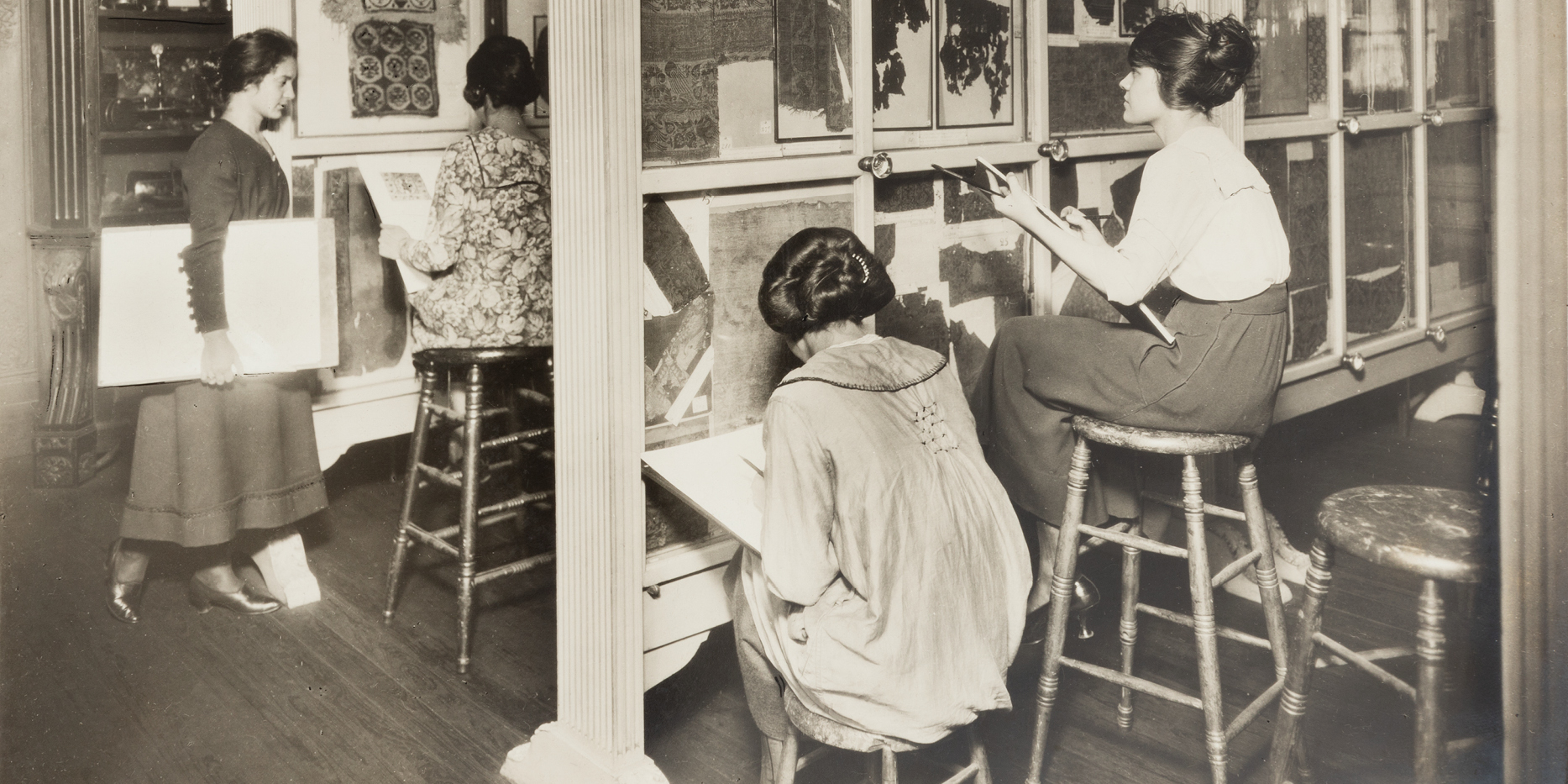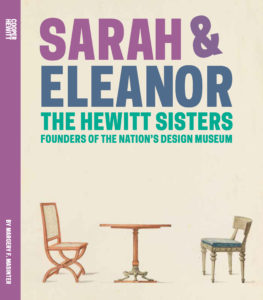Sarah & Eleanor Hewitt: Designing a Modern Museum

Students studying textiles from J. P. Morgan gift in the Cooper Union Museum galleries, 1925; Cooper Hewitt, Smithsonian Design Museum

Students studying textiles from J. P. Morgan gift in the Cooper Union Museum galleries, 1925; Cooper Hewitt, Smithsonian Design Museum
Sarah & Eleanor Hewitt: Designing a Modern Museum chronicles the colorful lives and contributions of the dynamic sisters and explores how they created The Cooper Union Museum for the Arts of Decoration. Through archival photography and documents, personal drawings and correspondence, news clippings and ephemera, the exhibition introduces the sisters as educators, collectors, and philanthropists.
In the early 1890s, Sarah and Eleanor began designing a museum for the arts of decoration within The Cooper Union for the Advancement of Science and Art, the public school founded by their grandfather, Peter Cooper, in 1859. Modeled on the Musée des Arts Décoratifs in Paris, the sisters followed advice from the directors of the Paris museum on how to organize, collect, and exhibit objects for their museum and library.
This exhibition marks the 125th anniversary of the opening of the museum galleries at Cooper Union in 1897, and celebrates the Smithsonian Institution’s 175th year.
Sarah (1859–1930) and Eleanor (1864–1924), also known as “Sallie” and “Nellie,” were two of six grandchildren of industrialist and educator Peter Cooper, and daughters of Abram and Sarah Hewitt. Smart, fun-loving, witty, and social, Sarah and Eleanor were competitive athletes, accomplished linguists, prolific writers, amateur actors, skilled musicians, and talented artists. An upbringing that prioritized education and philanthropy shaped the sisters’ creative and spirited personalities. Sarah and Eleanor were strongly influenced by their family and also shared their family’s opposition to granting women the right to vote.
After years of planning and soliciting wealthy family and friends to donate textiles, furniture, decorative engravings, etchings, books, and plaster casts for study, the Museum for the Arts of Decoration opened to the public on the fourth floor of The Cooper Union in 1897. The sisters called their museum “modern,” and planned the galleries, collections of objects, and reference materials to be freely accessible and open in the evenings so that working artisans could use it. Reference books and scrapbooks filled with visual aids were readily available to broaden the visitor’s education and visual vocabulary. Photographs on view in the exhibition show students actively engaging with the collection, studying, and sketching from works on view.
In their lifetimes, Sarah and Eleanor collected and donated over 50,000 objects (Cooper Hewitt’s permanent collection currently has more than 215,000 objects). The collection of design objects they amassed is the foundation of Cooper Hewitt’s permanent collection today.
This blog series explores the lives and work of Sarah and Eleanor, including their collecting pursuits, family travels, recreational activities, and social circle. Read more.
Cooper Hewitt Short Stories highlights important acquisitions to the collection, as well as key figures that contributed these gifts and shaped the museum’s development. Read more.
This brochure contains Sarah and Eleanor’s journey from childhood, to research in Paris, to the founding of the Museum for the Arts of Decoration. Download the brochure to read Sarah & Eleanor’s story.

Sarah & Eleanor Hewitt: Designing a Modern Museum is made possible with generous support from The Masinter Family Foundation. Additional support is provided by the Cooper Hewitt Master’s Program Fund.
Organized by a cross-departmental Cooper Hewitt team with project coordination by Matthew Kennedy, Cross-Platform Publishing Associate, and concept and research contributions by Margery Masinter, design historian and Cooper Hewitt trustee.
Exhibition design and graphic design by Kelly Sung.
Featured Image: Students studying textiles from J. P. Morgan gift in the Cooper Union Museum galleries, 1925; Cooper Hewitt, Smithsonian Design Museum